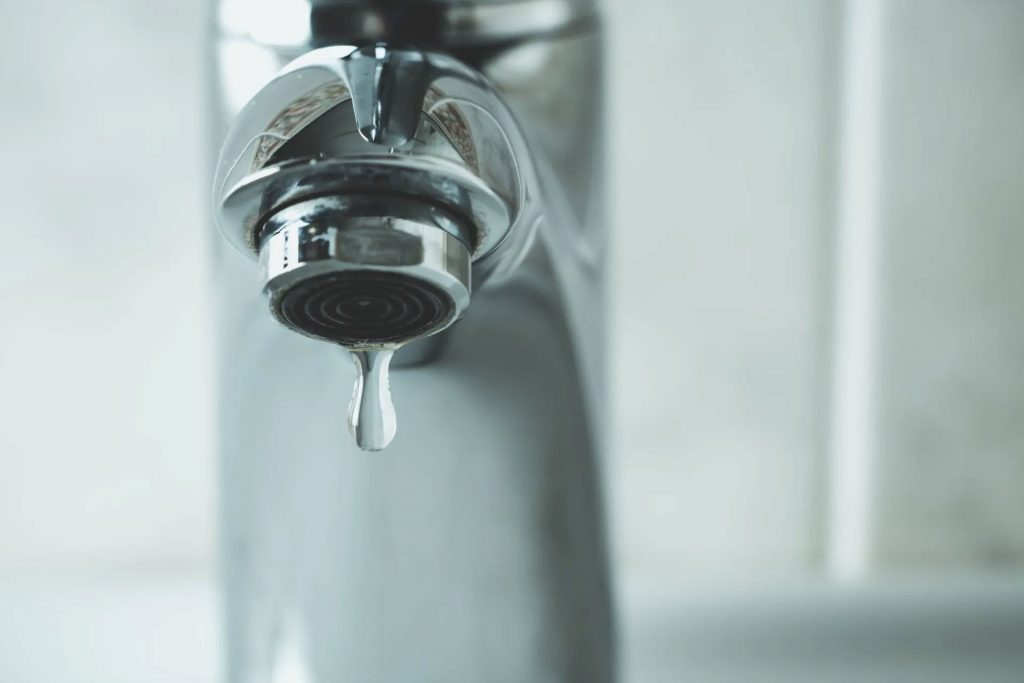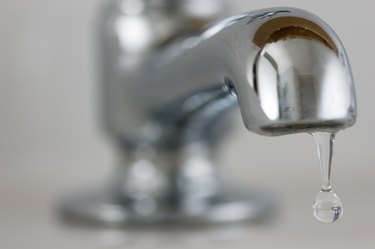Leading Methods for Resolving Low Water Pressure in Your Home
Leading Methods for Resolving Low Water Pressure in Your Home
Blog Article
What are your insights and beliefs on Dealing with Low Water Pressure in Your Home?

Low water pressure in your home can be an irritating trouble, influencing whatever from showering to washing dishes. If you're experiencing weak water circulation, there are a number of feasible causes and options to check out. In this guide, we'll discuss typical reasons for low tide stress and useful actions to deal with the issue successfully.
Intro to Low Tide Pressure
Low tide stress takes place when the flow of water from your taps, showers, and other components is weaker than usual. This can make everyday tasks extra challenging and much less effective. Understanding the causes of low water stress is essential to finding the best solution.
Typical Reasons For Low Tide Stress
Pipeline Obstructions
With time, pipelines can end up being blocked with mineral deposits, sediment, or debris, restricting the flow of water. This is a typical issue in older homes with galvanized steel pipelines.
Deterioration
Corrosion within pipes can result in leaks and decreased water stress. Rust buildup can restrict water circulation, especially in aging plumbing systems.
Faulty Stress Regulatory Authorities
Stress regulatory authorities are responsible for maintaining consistent water stress in your home. If they malfunction, it can cause low water pressure or unequal circulation throughout your house.
Local Water System Issues
Often, the trouble exists outside your home. Municipal water system problems, such as main line leaks or upkeep job, can momentarily reduce water pressure in your area.
How to Diagnose Low Tide Pressure
Inspecting Faucets and Components
Begin by testing the water pressure at various taps and fixtures throughout your home. If the issue is isolated to particular locations, it may show localized troubles.
Examining Pipes
Check noticeable pipes for indicators of leakages, rust, or clogs. Pay attention to any type of uncommon sounds, such as knocking or rattling pipelines, which might show problems within the plumbing system.
Consulting with a Plumber
If you're unable to identify the root cause of low water pressure, consider hiring a professional plumber to conduct a comprehensive examination. They can recognize underlying issues and advise ideal options.
DIY Solutions to Fix Low Water Stress
Cleaning Aerators and Showerheads
Mineral deposits can accumulate in aerators and showerheads, reducing water flow. Eliminate and clean up these parts routinely to enhance water pressure.
Flushing Water Heater
Sediment buildup in the hot water heater can limit flow and reduce efficiency. Purging the storage tank occasionally assists get rid of debris and preserve ideal performance.
Inspecting Stress Regulator
Make certain that the pressure regulator is working properly. Changing or changing the regulator can help restore correct water stress throughout your home.
Clearing Up Clogs in Pipes
For minor obstructions, try utilizing a plumbing snake or chemical drainpipe cleaner to clear blockages in pipelines. Be cautious when utilizing chemicals and comply with security standards.
When to Call an Expert Plumber
If do it yourself initiatives stop working to fix the issue or if you believe significant plumbing troubles, it's ideal to look for support from a licensed plumber. They have the competence and devices to resolve intricate issues securely and effectively.
Preventive Measures to Maintain Water Stress
Normal Maintenance
Set up regular maintenance for your plumbing system to stop problems such as deterioration, leaks, and blockages. Addressing minor troubles early can aid avoid more significant repair work later.
Mounting a Pressure Booster
Take into consideration installing a pressure booster pump to enhance water pressure in areas with consistently low flow. This can be especially beneficial for multi-story homes or residential properties with high-demand components.
Surveillance Water Use
Bear in mind water usage practices and prevent overtaxing the plumbing system. Easy adjustments, such as astonishing showers and washing loads, can aid preserve appropriate water pressure.
Verdict
Handling low tide pressure can be frustrating, yet recognizing the underlying causes and executing suitable services can recover optimal circulation throughout your home. Whether it's cleaning up aerators, evaluating pipes, or talking to a plumber, taking positive steps can make certain a steady supply of water for your daily requirements.
HOW TO FIX LOW WATER PRESSURE IN YOUR HOUSE (EXPERT GUIDE)
The morning shower lacking any real pressure? Bathtub taking hours to fill? Or maybe you’re dissatisfied with the inadequate performance from your combi boiler?
Then you, like millions of others across the UK, might be experiencing low water pressure.
Fortunately, the good news is that you don’t have to continue living this way. The cause of low water pressure in the home is often quite simple, and you may not even require a plumber to fix the problem.
What causes low water pressure in the house?
If you are experiencing issues with water pressure throughout your home, then you may have one of the problems outlined below.
Most of these problems can be fixed quite easily, but for others, you may need to contact a plumber.
Obstructed Shutoff Valve
If you’ve just bought a new home or recently had building work conducted on your property, there is a chance that your water valves were not fully opened.
If the water valve is partially closed, then you may be restricting the amount of water entering your home. To fix this, simply ensure the valve is fully open.
If the valve appears fully open but you are still encountering reduced water pressure, then the valve may be broken. If this is the case, do not under any circumstances try to fix it without proper training.
Often found under your kitchen sink, a water valve will usually look like a bright yellow handle.
Again, if you believe the water valve is broken, contact a plumber immediately.
Leaks in Your Water Pipes
Leaks are the worst-case scenario when it comes to low water pressure.
If the water pipes are damaged, then this will cause low water pressure, as not all the water will make it to your taps.
After you’ve checked to see if the valve is fully open, you can conduct a leak check of your home. Now, this may seem scary, but it is actually quite simple.
Clogged Water Pipes
Clogged water pipes are one of the most common causes of low water pressure.
These clogs usually build-up when your home is supplied water via iron pipes. Iron is particularly vulnerable to rusting which can then break off and cause an obstruction within your system. You also face the problem of things like dirt, gravel or sand entering creating mineral deposits which further block water flowing from the mains water supply.
Unfortunately, if you suspect that clogged pipes may be restricting your water supply, then you will need to contact a plumber.
In this situation, you will either need to have your pipes removed and cleaned or in more severe cases, you could require a new set of water pipes.
Designer Taps
Designer taps look fantastic, but are they built to be efficient in your plumbing system? Modern taps are built for modern homes and they often have lower flow rates that are specifically designed for use within high-pressure systems.
Install a Water Pressure Booster Pump
If the issue is simply that the mains water pressure supply is too low, the simplest fix is to invest in a booster pump. Found in homes of all shapes and sizes, booster pumps are a relatively cheap option to add extra pressure to your home.
Designed to increase water pressure by passing water into the pump from your mains supply and then ejecting it into your home water system at a higher pressure, a booster pump is a truly simple and effective solution to increasing water pressure.
https://www.anchorpumps.com/blog/the-plumbers-guide-to-fixing-low-water-pressure/

HOW TO FIX LOW WATER PRESSURE IN YOUR HOUSE (EXPERT GUIDE)
The morning shower lacking any real pressure? Bathtub taking hours to fill? Or maybe you’re dissatisfied with the inadequate performance from your combi boiler?
Then you, like millions of others across the UK, might be experiencing low water pressure.
Fortunately, the good news is that you don’t have to continue living this way. The cause of low water pressure in the home is often quite simple, and you may not even require a plumber to fix the problem.
What causes low water pressure in the house?
If you are experiencing issues with water pressure throughout your home, then you may have one of the problems outlined below.
Most of these problems can be fixed quite easily, but for others, you may need to contact a plumber.
Obstructed Shutoff Valve
If you’ve just bought a new home or recently had building work conducted on your property, there is a chance that your water valves were not fully opened.
If the water valve is partially closed, then you may be restricting the amount of water entering your home. To fix this, simply ensure the valve is fully open.
If the valve appears fully open but you are still encountering reduced water pressure, then the valve may be broken. If this is the case, do not under any circumstances try to fix it without proper training.
Often found under your kitchen sink, a water valve will usually look like a bright yellow handle.
Again, if you believe the water valve is broken, contact a plumber immediately.
Leaks in Your Water Pipes
Leaks are the worst-case scenario when it comes to low water pressure.
If the water pipes are damaged, then this will cause low water pressure, as not all the water will make it to your taps.
After you’ve checked to see if the valve is fully open, you can conduct a leak check of your home. Now, this may seem scary, but it is actually quite simple.
Clogged Water Pipes
Clogged water pipes are one of the most common causes of low water pressure.
These clogs usually build-up when your home is supplied water via iron pipes. Iron is particularly vulnerable to rusting which can then break off and cause an obstruction within your system. You also face the problem of things like dirt, gravel or sand entering creating mineral deposits which further block water flowing from the mains water supply.
Unfortunately, if you suspect that clogged pipes may be restricting your water supply, then you will need to contact a plumber.
In this situation, you will either need to have your pipes removed and cleaned or in more severe cases, you could require a new set of water pipes.
Designer Taps
Designer taps look fantastic, but are they built to be efficient in your plumbing system? Modern taps are built for modern homes and they often have lower flow rates that are specifically designed for use within high-pressure systems.
Install a Water Pressure Booster Pump
If the issue is simply that the mains water pressure supply is too low, the simplest fix is to invest in a booster pump. Found in homes of all shapes and sizes, booster pumps are a relatively cheap option to add extra pressure to your home.
Designed to increase water pressure by passing water into the pump from your mains supply and then ejecting it into your home water system at a higher pressure, a booster pump is a truly simple and effective solution to increasing water pressure.
https://www.anchorpumps.com/blog/the-plumbers-guide-to-fixing-low-water-pressure/
We were guided to that write-up on 10 Reasons for Low Water Pressure in Your House from an associate on our other blog. Remember to take a moment to share this blog if you appreciated it. Thank you for going through it.
Website Report this page